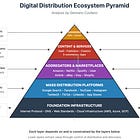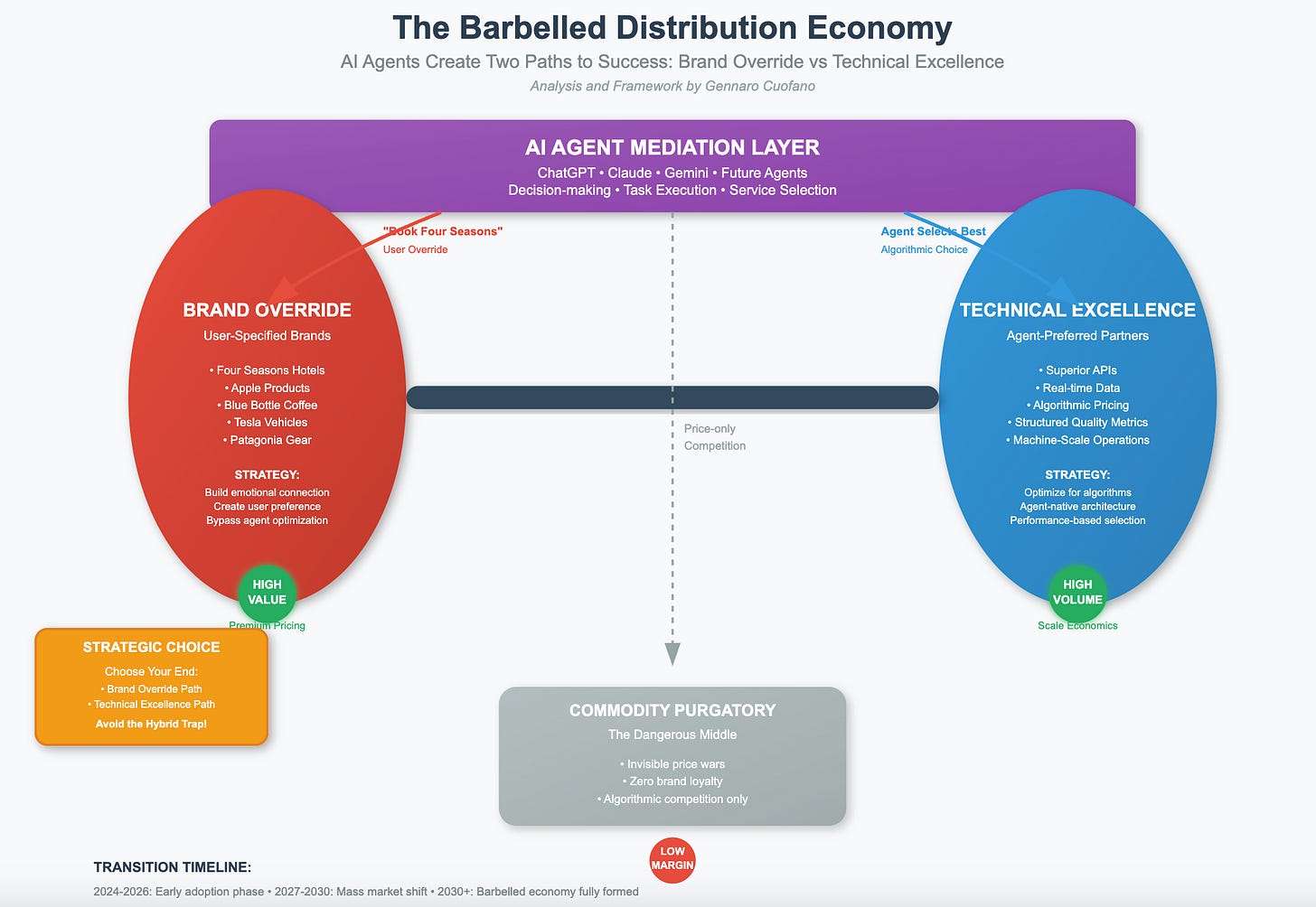The New Rules of Distribution: How AI Agents Are Rewriting the Digital Playbook
Between the old and new digital distribution pipelines lies a fundamental shift toward a barbellled world where only brand override and technical excellence survive.
The digital distribution pyramid we've known for two decades is undergoing its most significant transformation since the birth of the web.
While search engines, social media platforms, and digital marketplaces continue to dominate today's landscape, a new layer of distribution is emerging that will fundamentally change how value flows through the digital ecosystem.




